Barometer 12 Click
R420.00 ex. VAT
Barometer 12 Click is a compact add-on board that measures air pressure in a specific environment. This board features the ICP-10125, a high-accuracy, low-power, 10-atm waterproof barometric pressure and temperature sensor from TDK InvenSense. It has a normal pressure operating range from 95 to 105kPa (extended from 30 to 110kPa) and a maximum temperature operating range from -40 to 85°C. The sensor comes in a chimney package with waterproofing gel providing IPx8 waterproofing at 10atm. This Click board™ makes the perfect solution for the development of sports and fitness activity monitoring applications, altimeters, and barometers for portable devices, indoor/outdoor navigation, and more.
Barometer 12 Click is fully compatible with the mikroBUS™ socket and can be used on any host system supporting the mikroBUS™ standard. It comes with the mikroSDK open-source libraries, offering unparalleled flexibility for evaluation and customization. What sets this Click board™ apart is the groundbreaking ClickID feature, enabling your host system to seamlessly and automatically detect and identify this add-on board.
Stock: Lead-time applicable.
| 5+ | R399.00 |
| 10+ | R378.00 |
| 15+ | R357.00 |
| 20+ | R343.56 |

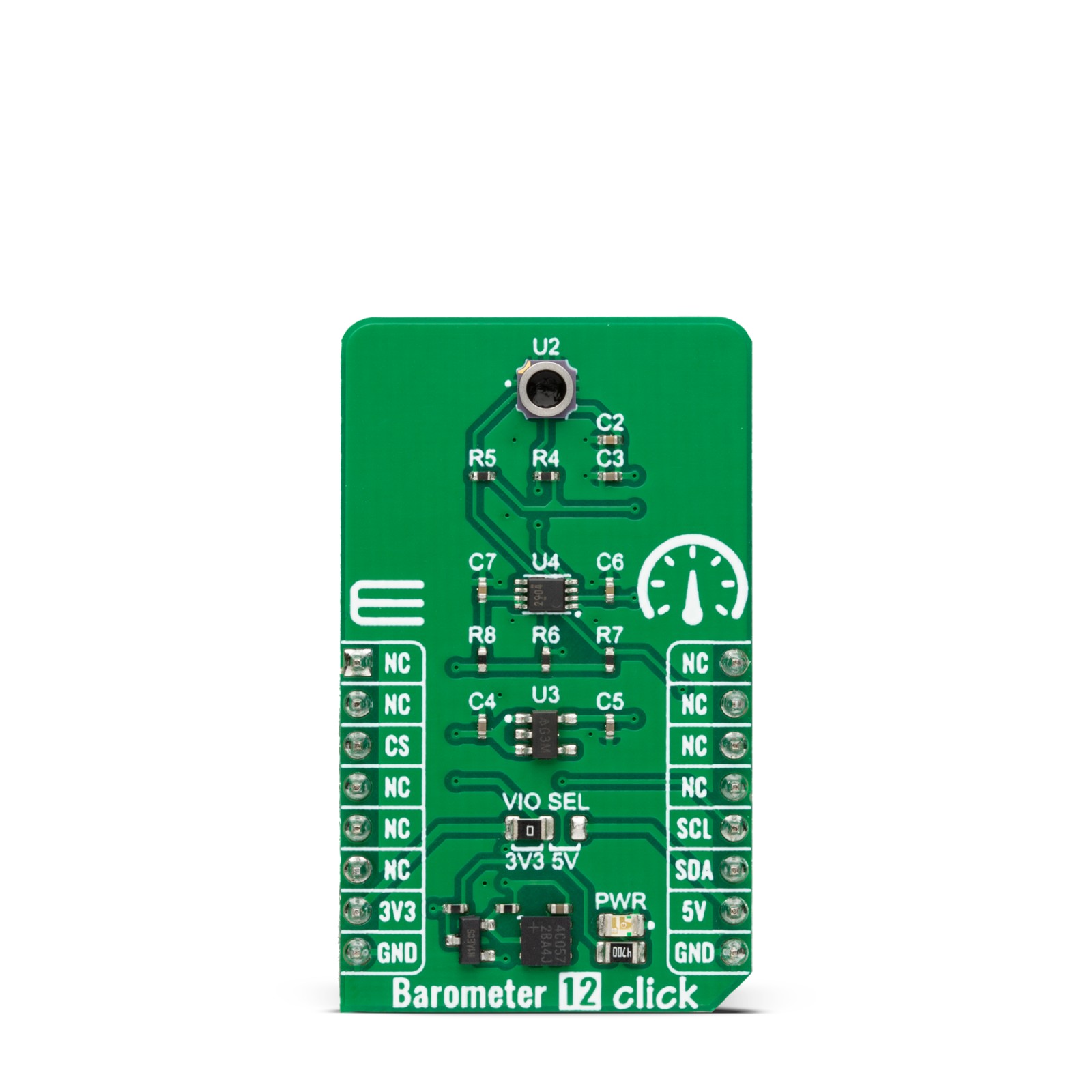
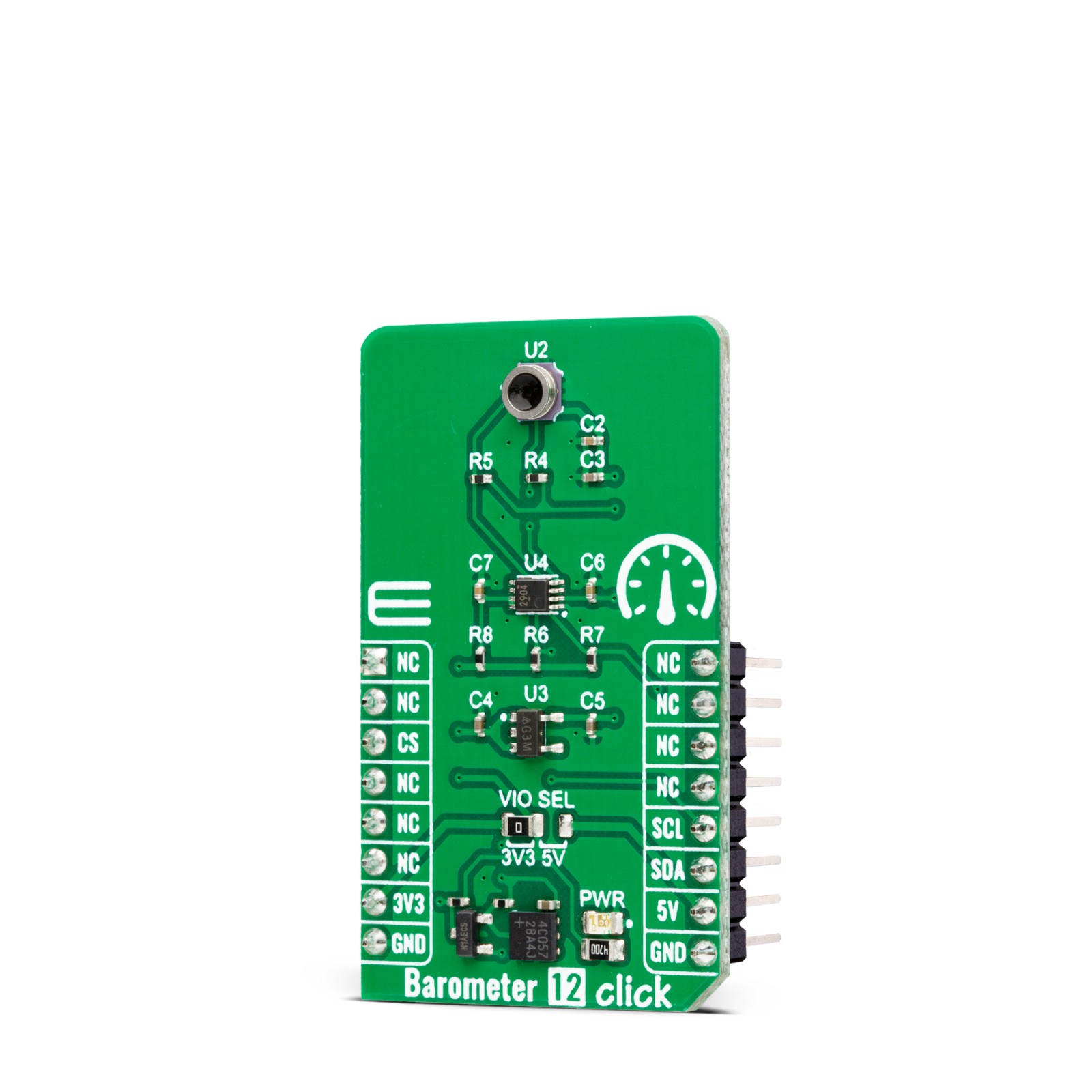
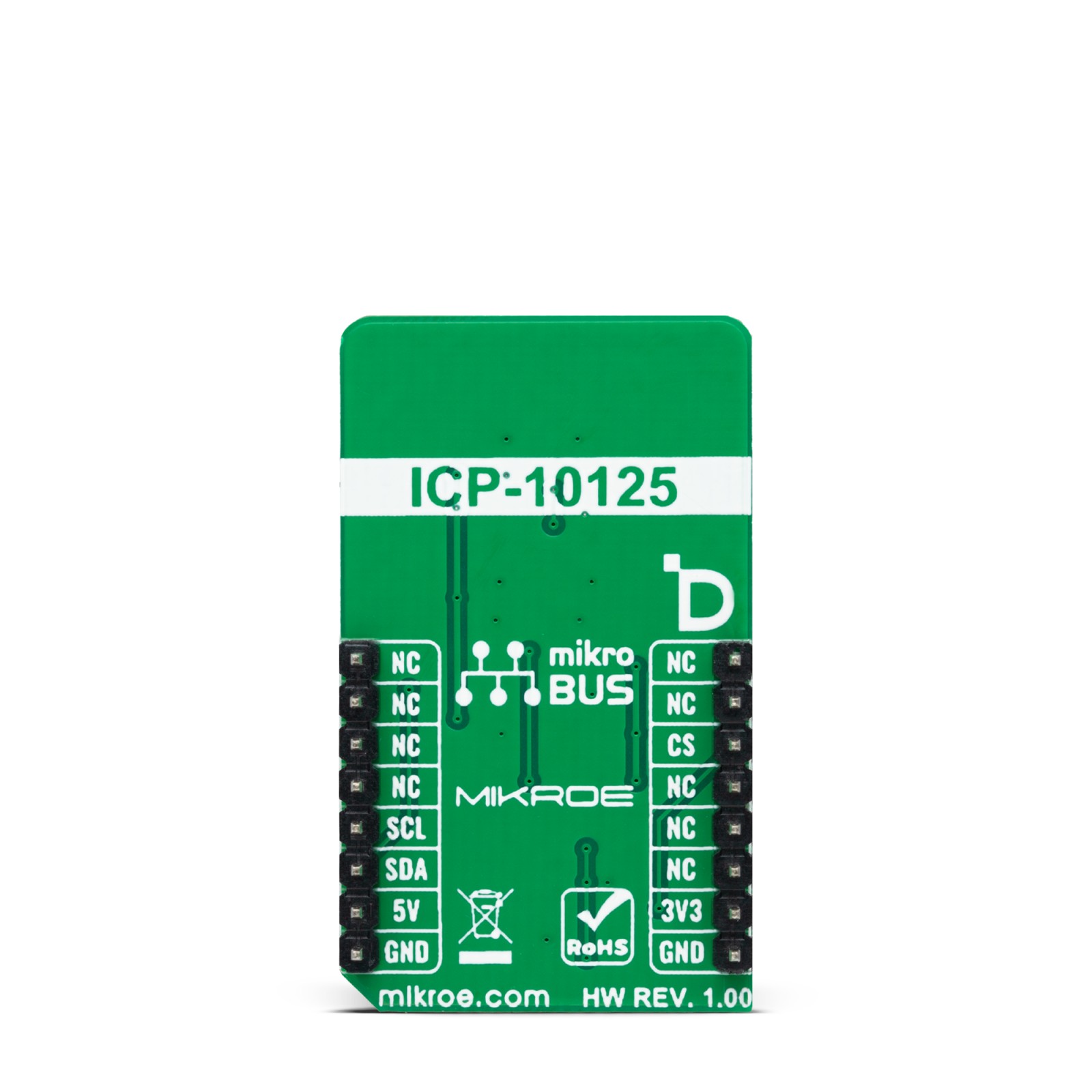
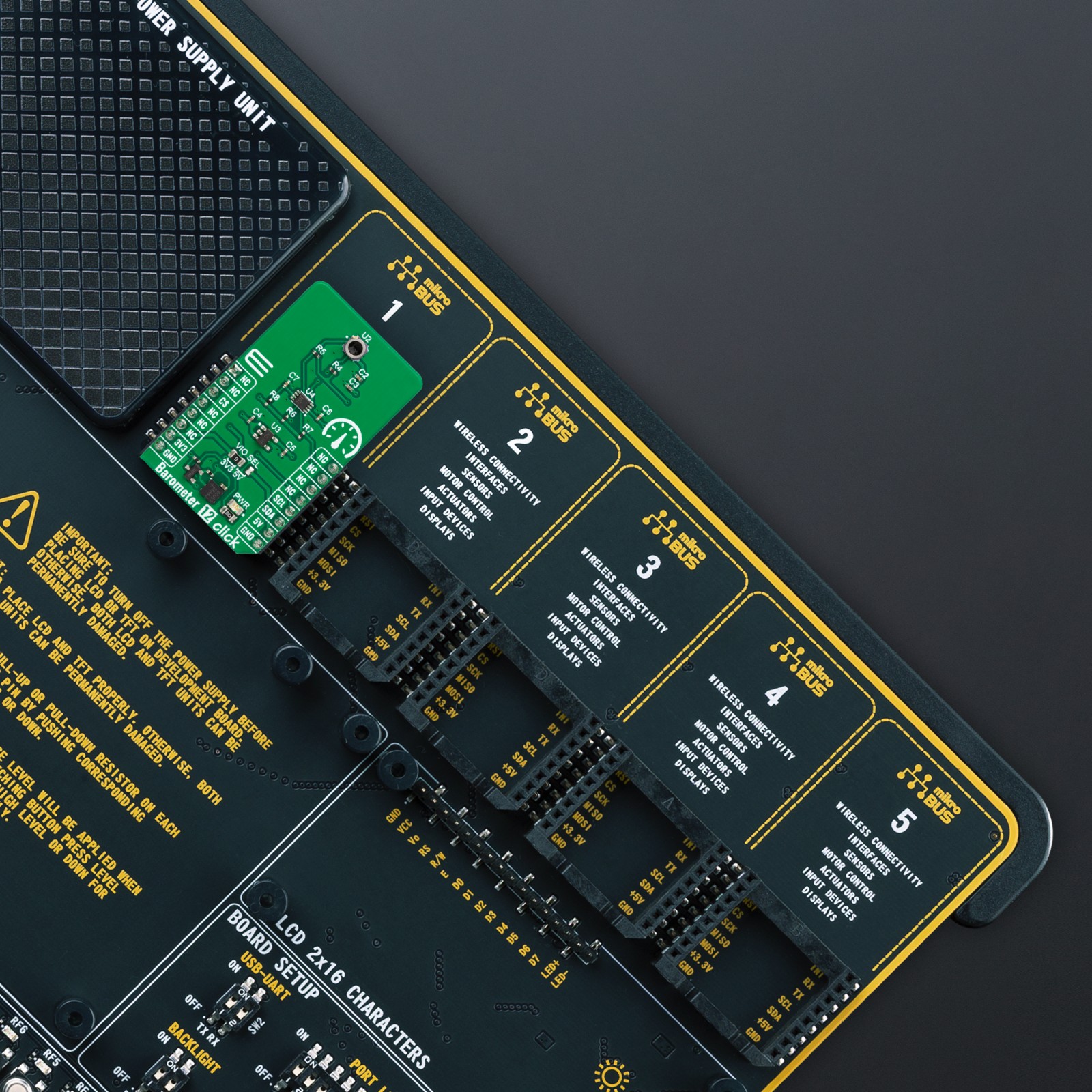
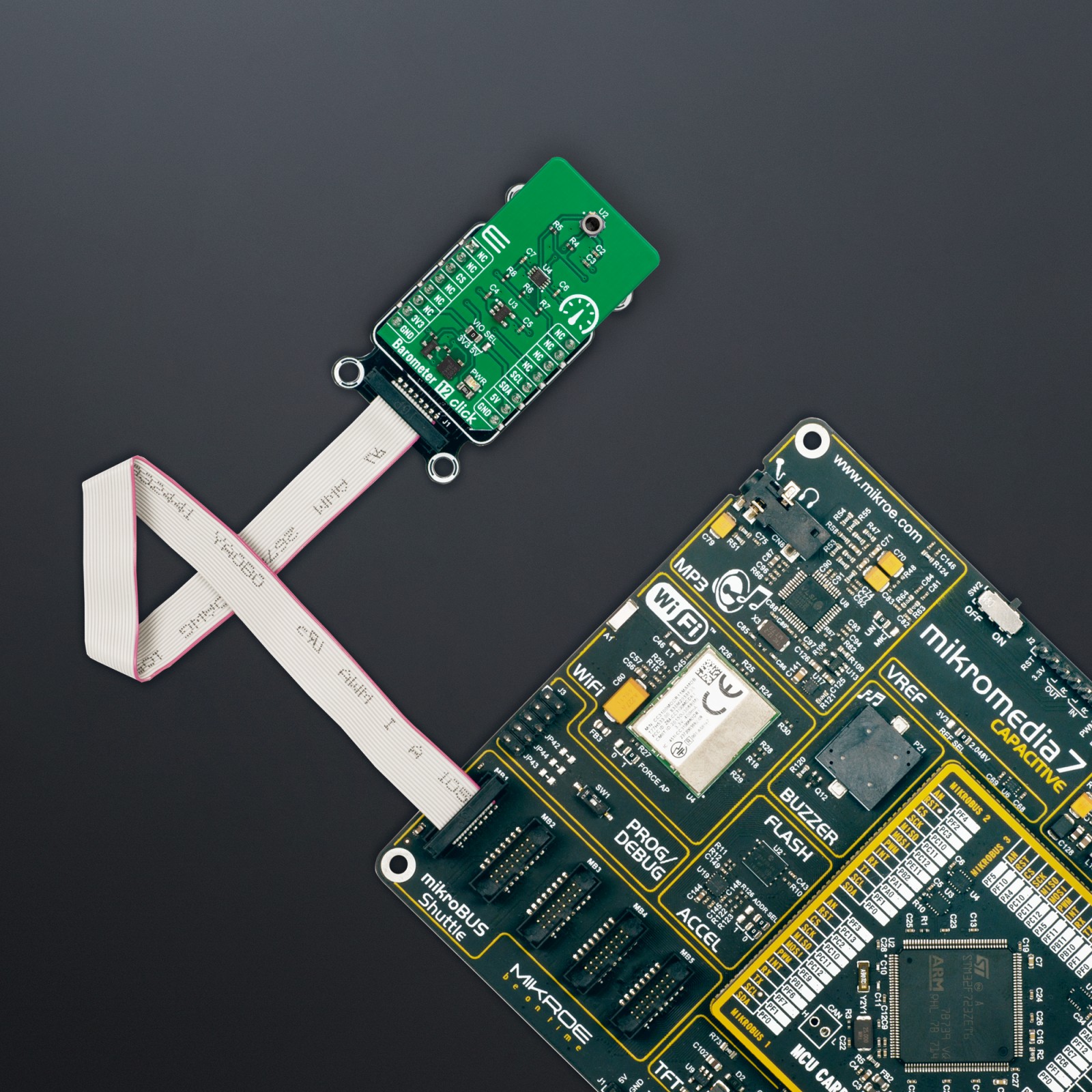
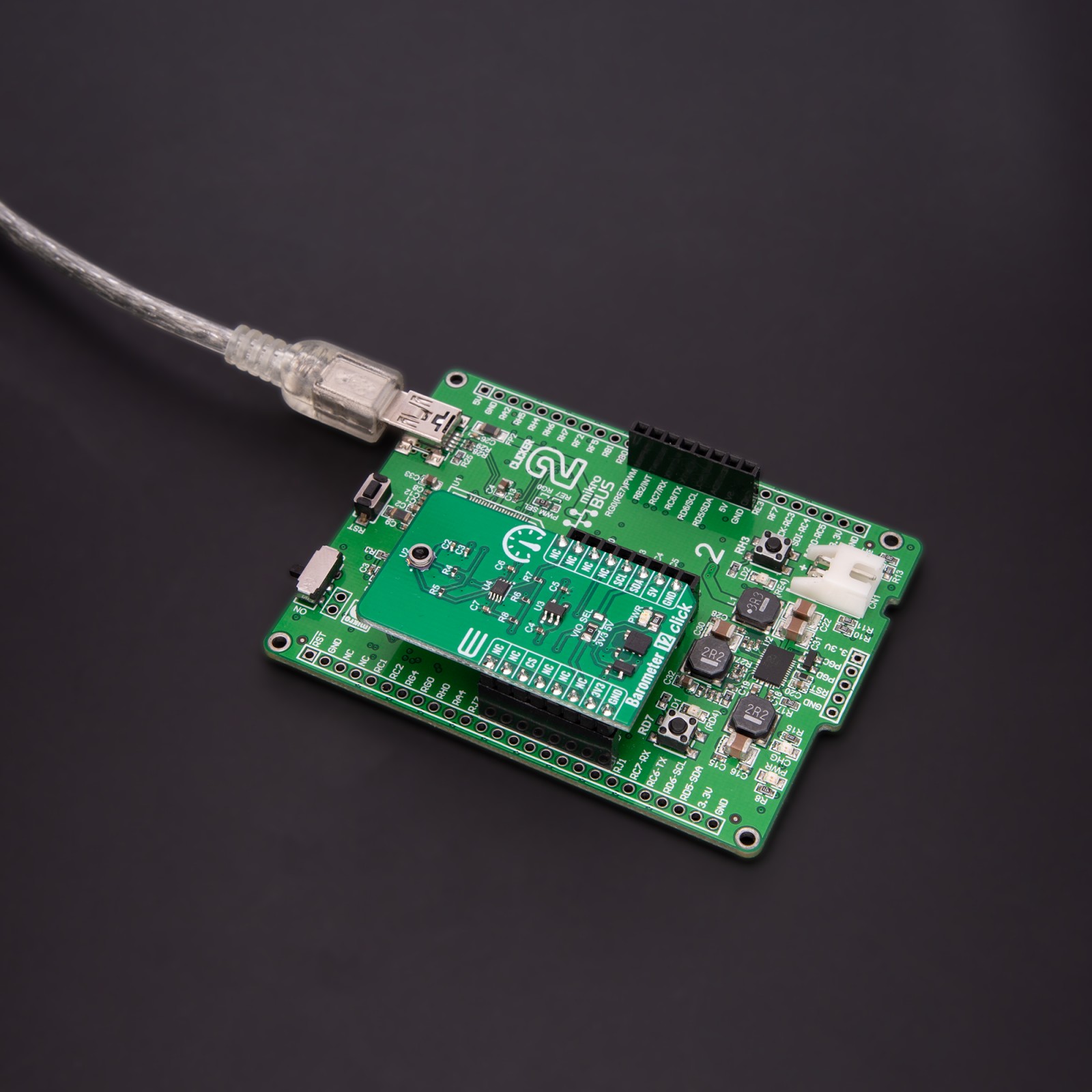
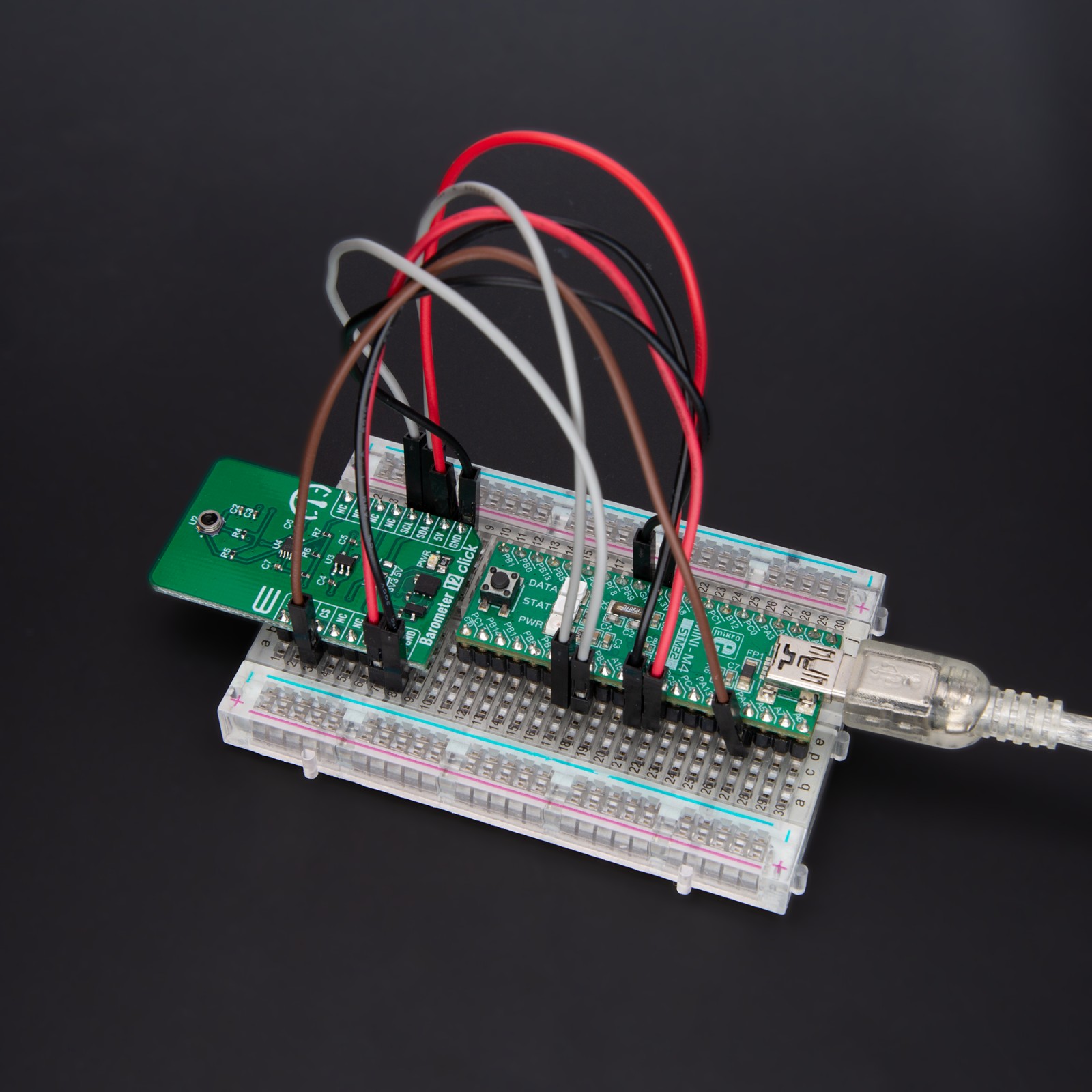


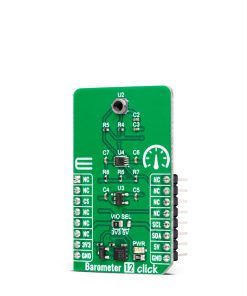

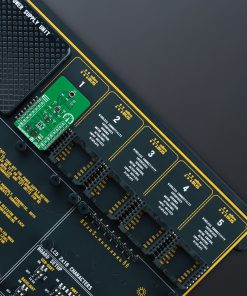
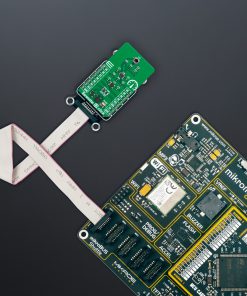
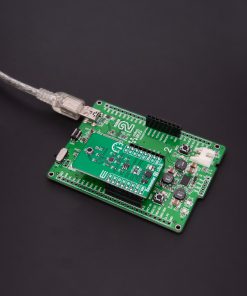

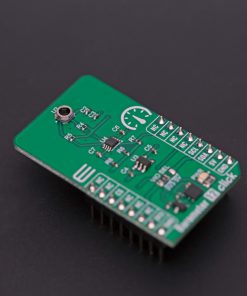
.jpg)








